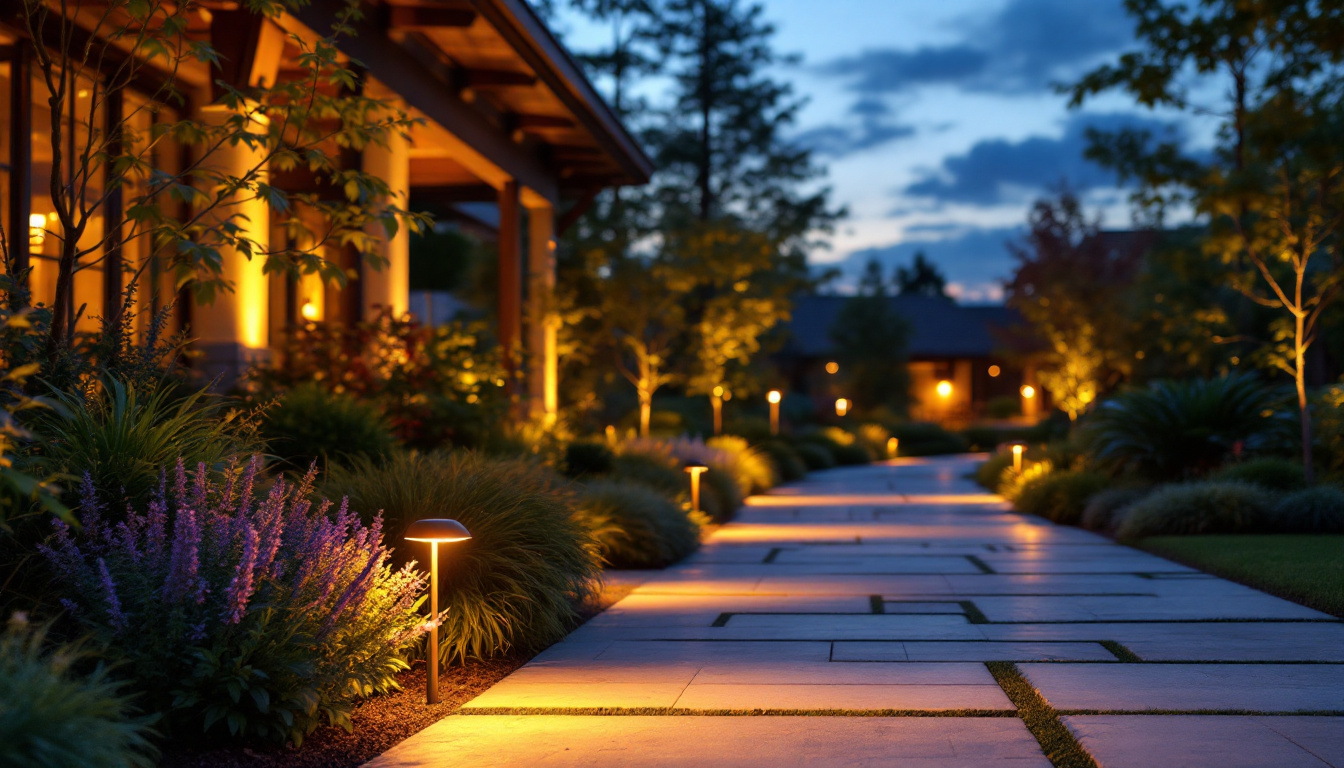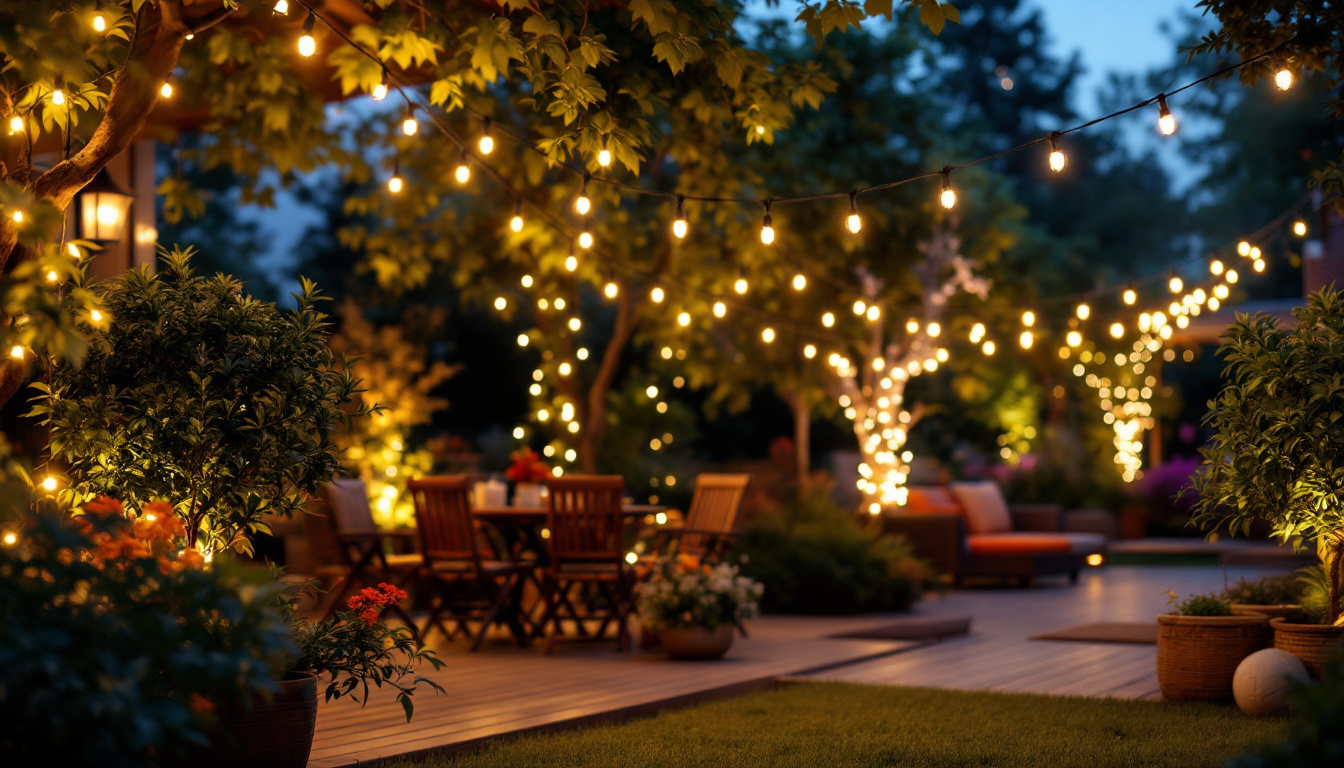

As the demand for energy-efficient and intelligent lighting solutions continues to rise, outdoor motion sensor LED lights have emerged as a popular choice among homeowners and businesses alike. For lighting contractors, understanding the intricacies of these systems is essential to delivering optimal results. This article delves into the top strategies that lighting contractors can employ when working with outdoor motion sensor LED lights, ensuring both functionality and aesthetic appeal.
Before diving into installation strategies, it is crucial for lighting contractors to have a solid grasp of how motion sensor technology operates. Motion sensors detect movement within a designated area and activate the lighting system accordingly. This not only enhances security but also conserves energy by ensuring lights are only on when needed. The integration of such technology into lighting systems represents a significant advancement in both safety and efficiency, making it an essential consideration for modern installations.
There are primarily two types of motion sensors used in outdoor lighting: passive infrared (PIR) sensors and microwave sensors. PIR sensors detect changes in infrared radiation, typically emitted by warm bodies. They are ideal for residential applications due to their reliability and cost-effectiveness. These sensors are particularly popular in home security systems, where they can provide peace of mind by illuminating pathways and entry points when movement is detected.
On the other hand, microwave sensors emit microwave pulses and measure the reflection of those waves. These sensors can detect movement through walls and are often used in commercial settings where more extensive coverage is required. Their ability to penetrate obstacles makes them suitable for larger areas, such as parking lots or warehouses. Understanding the differences between these technologies can help contractors choose the right sensor for each specific project, ensuring that the lighting system is both effective and efficient in meeting the needs of the space.
When selecting outdoor motion sensor LED lights, several key features should be considered. First, the detection range is crucial; it determines how far away a person can be detected before the lights activate. A range of 30 to 50 feet is common for residential settings, while commercial applications may require longer ranges. This range can significantly impact the effectiveness of the lighting system, especially in areas with high foot traffic or where visibility is paramount.
Another important feature is the adjustable sensitivity settings. This allows contractors to customize the sensor’s responsiveness to minimize false triggers caused by pets or passing cars. Additionally, timers and dimming options can enhance the functionality of the lighting system, providing flexibility for various scenarios. For instance, a dimming feature can allow lights to operate at a lower intensity during late-night hours, reducing light pollution and energy consumption while still maintaining a level of safety. Furthermore, some advanced models may offer smart technology integration, enabling users to control their lighting systems remotely via smartphone apps, adding another layer of convenience and security to outdoor lighting solutions.
Proper installation is vital to ensure the effectiveness of outdoor motion sensor LED lights. Following best practices can significantly enhance the performance and longevity of the lighting system.
Placement of motion sensors is one of the most critical aspects of installation. Sensors should be positioned at a height that maximizes their detection capabilities while minimizing obstructions. Typically, mounting sensors 6 to 8 feet above ground level is recommended.
Contractors should also consider the coverage area. Placing sensors in corners or at angles can help cover larger spaces. Avoiding direct exposure to sunlight or heavy rain can prevent false activations and prolong the life of the sensor. Additionally, it is beneficial to conduct a test run after installation to ensure that the sensors are accurately detecting motion without unnecessary triggers from passing animals or swaying branches. Adjustments may be necessary to fine-tune the sensitivity settings for optimal performance.
When installing outdoor motion sensor LED lights, wiring and power supply must be handled with care. Using weatherproof wiring and connectors is essential to protect against moisture and environmental wear. Additionally, ensuring that the power supply is adequate for the number of lights being installed will prevent flickering or dimming.
For contractors working in areas where electrical access is limited, solar-powered motion sensor lights can be an excellent alternative. These systems harness solar energy during the day and provide illumination at night, making them both eco-friendly and cost-effective. It’s also important to consider the orientation of solar panels; they should be installed in a position that receives maximum sunlight throughout the day. Regular maintenance, such as cleaning the solar panels to remove dirt and debris, can further enhance their efficiency and ensure reliable operation. Furthermore, integrating smart technology with these systems can allow homeowners to control their lighting remotely, providing added convenience and security.
While functionality is paramount, the aesthetic appeal of outdoor motion sensor LED lights should not be overlooked. Striking a balance between form and function can elevate the overall design of outdoor spaces.
Lighting contractors should consider the architectural style of the property when selecting fixtures. From sleek modern designs to more traditional lantern styles, the right choice can complement the existing aesthetics of the home or business. Additionally, selecting fixtures with finishes that resist corrosion and fading will ensure longevity and maintain visual appeal over time.
Color temperature is another essential factor. Warmer color temperatures (2700K to 3000K) create a welcoming atmosphere, while cooler temperatures (4000K to 5000K) can provide a more modern and vibrant look. Understanding the desired ambiance will guide the selection process.
In today’s digital age, integrating smart technology into outdoor lighting systems is becoming increasingly popular. Many motion sensor LED lights can now be connected to smart home systems, allowing homeowners to control their lighting remotely via smartphones or voice-activated devices.
Contractors should familiarize themselves with various smart lighting options available in the market. This knowledge will enable them to offer clients advanced features such as scheduling, remote access, and energy monitoring, enhancing the overall value of their services.
Energy efficiency is a significant consideration for many clients, making it essential for lighting contractors to highlight the benefits of outdoor motion sensor LED lights. These systems not only reduce energy consumption but also contribute to a more sustainable future.
LED lights are known for their energy efficiency, consuming significantly less power compared to traditional incandescent or halogen bulbs. When combined with motion sensors, these lights only operate when needed, further reducing energy waste. This dual approach can lead to substantial savings on electricity bills, making it an attractive selling point for contractors.
Additionally, educating clients about the long lifespan of LED lights can further emphasize their cost-effectiveness. With lifespans often exceeding 25,000 hours, clients can enjoy reduced maintenance costs and fewer replacements over time.
Lighting contractors can also play a vital role in promoting eco-friendly practices. By encouraging clients to choose energy-efficient lighting solutions, contractors contribute to reducing carbon footprints and promoting sustainability. Providing information on recycling options for old lighting fixtures can further enhance this commitment to the environment.
Furthermore, contractors can suggest the use of solar-powered outdoor motion sensor lights as an alternative. These lights harness renewable energy, making them an excellent choice for environmentally conscious clients.
While outdoor motion sensor LED lights offer numerous benefits, they can also present challenges during installation and operation. Being prepared to address these issues can enhance the contractor’s reputation and client satisfaction.
False triggers can be a common issue with motion sensor lights, often caused by pets, passing vehicles, or even tree branches swaying in the wind. To mitigate this, contractors should ensure that sensors are installed at the appropriate height and angle, avoiding direct exposure to potential triggers.
Adjustable sensitivity settings can also be beneficial. Educating clients on how to fine-tune these settings can help minimize false activations and improve the overall effectiveness of the lighting system.
Regular maintenance is essential to ensure the longevity and performance of outdoor motion sensor LED lights. Contractors should advise clients on simple maintenance tasks, such as cleaning the sensors and fixtures to remove dirt and debris that may obstruct their functionality.
In the event of malfunction, being equipped with troubleshooting tips can save time and enhance client satisfaction. Common issues may include flickering lights, which can often be resolved by checking connections or replacing bulbs. Providing clients with a basic troubleshooting guide can empower them to address minor issues independently.
Outdoor motion sensor LED lights represent a significant advancement in lighting technology, offering both energy efficiency and enhanced security. For lighting contractors, understanding the nuances of these systems is crucial to delivering high-quality installations that meet client expectations.
By employing the strategies outlined in this article, contractors can enhance their expertise and provide exceptional service. From understanding motion sensor technology to addressing common challenges, these insights will empower contractors to navigate the evolving landscape of outdoor lighting effectively.
As the industry continues to innovate, staying informed and adaptable will ensure that lighting contractors remain at the forefront of this dynamic field, delivering solutions that not only illuminate but also enhance the beauty and functionality of outdoor spaces.
Ready to elevate your lighting installations with the most efficient and secure outdoor motion sensor LED lights? At LumenWholesale, we provide lighting contractors with the highest quality, spec-grade lighting products at prices that can’t be beaten. Say goodbye to local distributor markups and hello to our extensive selection that meets rigorous industry standards. With free shipping on bulk orders, you can trust that you’re getting premium lighting at the best value — no hidden fees, no compromises. Enhance your outdoor lighting projects with the perfect combination of quality, affordability, and convenience. Visit LumenWholesale today for Wholesale Lighting at the Best Value.

Discover the essential insights from Jacques Risler’s expertise in lighting contracting.

Discover essential tips for lighting contractors to enhance outdoor spaces with string lighting.

Discover why purchasing architectural gooseneck and barn lights in bulk from local distributors might not be the best choice.

Explore the key challenges lighting contractors face with power outlets, from installation hurdles to safety concerns, and discover innovative solutions to streamline your projects..
Get notified when NEW deals are released.
Optimize your budget with wholesale discounts.
Only top-quality, specification-grade lighting products.
No additional costs at checkout - what you see is what you pay.
We understand the unique needs of contractors.